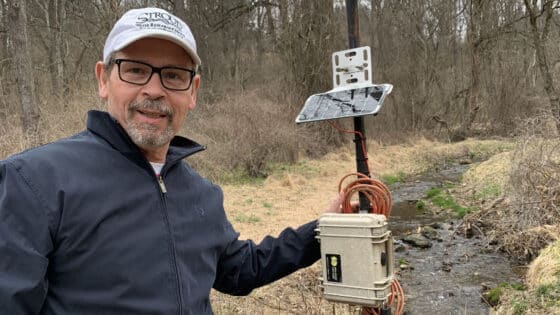Rupp, D.E., S.T. Larned, D.B. Arscott, J. Schmidt. 2008. Journal of Hydrology 359:88–104.
doi: 10.1016/j.jhydrol.2008.06.019
Summary
Complex spatial and temporal flow patterns in alluvial plain rivers can be caused by variation in groundwater surface-water exchange, channel planform, and climatic variation. Such complexity poses a challenge for developing relationships between runoff, groundwater recharge, and river flow, for predicting effects of water resource developments, and for understanding hydrologic effects on ecological processes. The Selwyn River of New Zealand is one such hydrologically complex river. To begin to understand the spatio-temporal flow patterns of the Selwyn River, we used linear and logistic models to reconstruct a 22-yr record of river flow across the alluvial Canterbury Plains. The 60 km – long model domain encompasses perennial, ephemeral, and intermittent reaches embedded within larger effluent and influent sections. Flow at 18 cross-sections distributed along the river mainstem was modelled as a function of flow at stage recorders located at each end of the domain with flow interpolated between cross-sections to generate a flow record continuous in space. Data from 38-months of flow-gauging at the cross-sections was used to calibrate model parameters. The reconstructed record indicates that while the central section of the river was dry during most of the 38-month observation period, it was not uncommon during the preceding two decades for the river to flow along its entire course for several months consecutively. The recent dry period may be part of a longer trend: the mean annual simulated length of dry river channel has increased by 0.6 km yr−1 over the last two decades. Output metrics from the model can increase our understanding of hydrologic control of ecological processes in alluvial rivers. We provide several examples of potential model applications to ecological studies.


